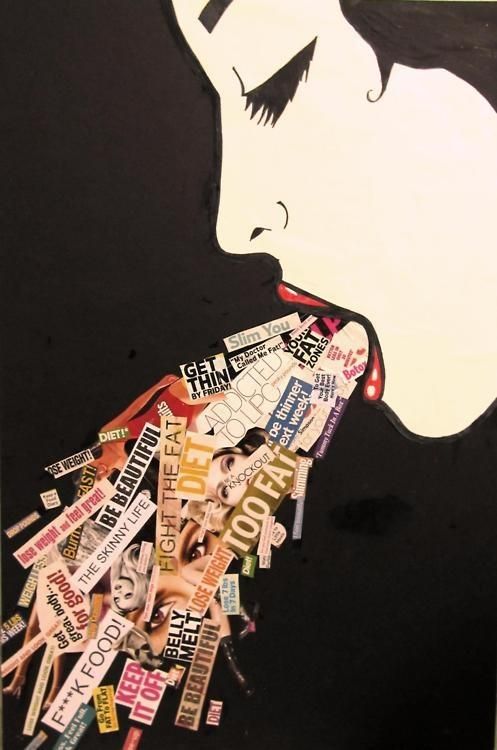
Popular culture is the entirety of ideas, perspectives, attitudes, images, and other phenomena that are within the mainstream of a given culture, especially Western culture of the early to mid-20th century. Popular culture has a way of influencing an individual's attitudes towards certain topics. As definition itself indicates, popular culture heavily influences society, especially women. On an average day, women spend at least two hours on the mass media, and while doing so they are exposed to a lot of advertisements, movies, music videos which show the ideal standards for women. The beauty ideal being sold to women everywhere is that to be beautiful you must be thin, sexy, young, and light skinned. Seeing women portrayed in these ways leads women to believe that appearance and sexualized behavior are their most valued attributes. Eighty to ninety percent of women are not satisfied with their body and by the exposure to the media’s beauty ideal, they feel concerned and anxious about their bodies. Sexualization and objectification undermine confidence and comfort with one’s own body, and lead to shame, anxiety, and self-disgust. Studies have found that only three minutes of viewing fashion magazines left 70% of women feeling depressed, guilty and ashamed while 10 minutes of watching a music video portraying ultra-thin models left adolescent girls feeling dissatisfied with their bodies (Bell, Lawton & Dittman, 2007).
The advertisements showing idealized women also affect women mentally. By the exposure to those ads, there has been a rise in depression scores among women. Popular culture’s obsession with thinness has also led to weight bias involving stigma and discrimination of people of size. We do not really see fat people being praised in the mass media. Fat people are shown as lazy, unsuccessful, unintelligent people which makes women hate being fat and irritate fat people. This may also cause to the rise of eating disorders like anorexia nervosa.
In the movie Stepford wives, the perfect wives are like Barbies who are subservient to their husbands, just like the ideal women presented in media. The primary importance is given to the youth and physical attractiveness of the "new" women, although the original wives were not "deformed" or "imperfect." Joanna Eberhart, although she is naturally beautiful, is not seen as attractive as the ideal Stepford women at first. To have the ideal feminine beauty, she has to have larger breasts, narrower waist and fuller hips. She must at the same time has to be like a non-threatening little girl who belongs to her husband. In Stepword, wives become men's sexual and domestic slaves, they relate only to husbands and children. Women are seen as doll-like creatures to please men. They are not independent from their husbands. Men are dominant. Women do not need to be clever or intellectual, their appearance is more important. However everything changes at the end.
If you haven't watched this movie yet I recommend you to give it a look :)
Ezgi

Hi! I am a robot. I just upvoted you! I found similar content that readers might be interested in:
http://www.ncwcanada.com/ncwc2/wp-content/uploads/2014/03/Presentation-20110604-Peters-Popular-Culture-Mental-Health.pdf
Downvoting a post can decrease pending rewards and make it less visible. Common reasons:
Submit
Western culture crushes women's spirits. It's sickening!... "Be pretty." "Be thin." "Be the best dressed." It's ironic how it pushes us to over-sexualize ourselves, while pushing the ideal to compete with men for power and influence at the same time. The culture is messing with all genders quite frankly, but women's the most IMO.
Downvoting a post can decrease pending rewards and make it less visible. Common reasons:
Submit